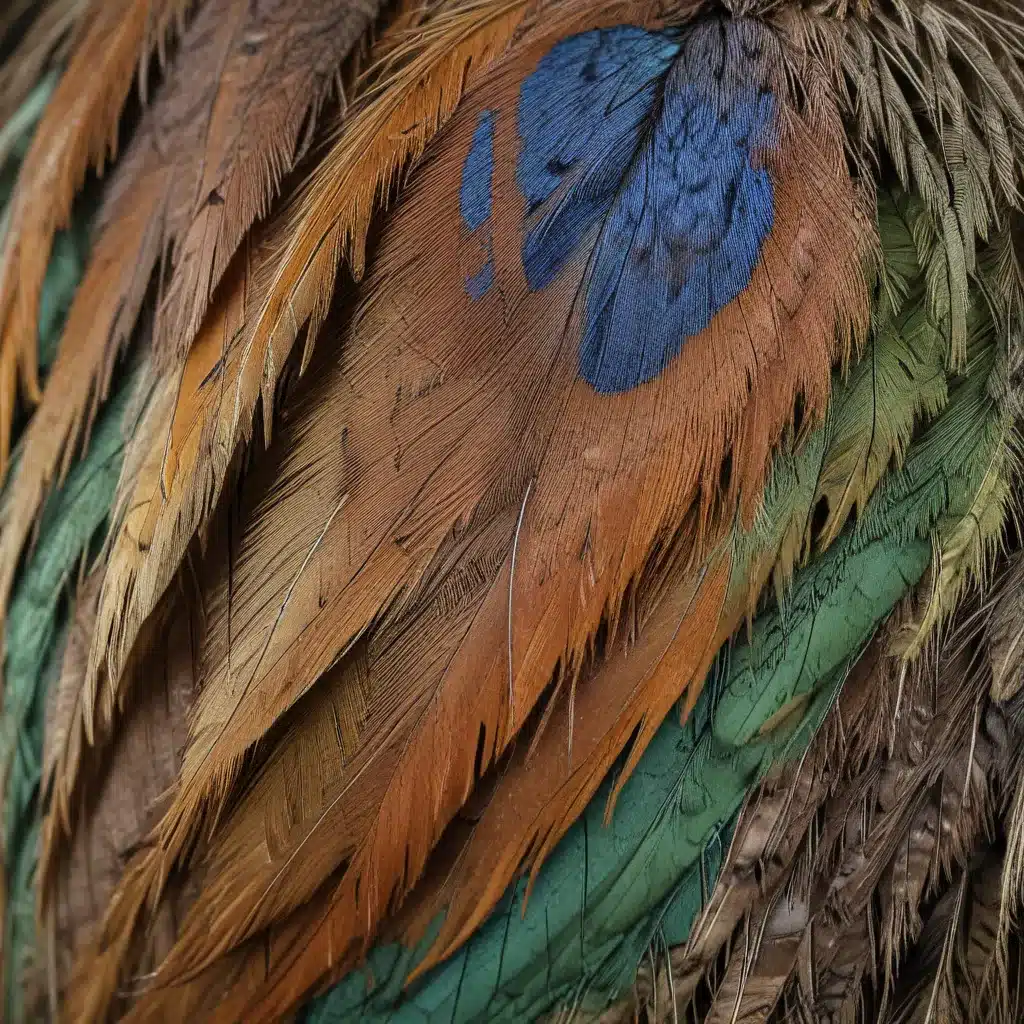
Avian Nutrition and Plumage Health
As an experienced avian caretaker, I’ve seen firsthand how a bird’s diet can dramatically impact the quality, luster, and overall health of its feathers. Proper nutrition is essential for maintaining vibrant, well-groomed plumage – a true mark of an avian companion’s wellness. In this comprehensive guide, we’ll explore the intricacies of avian nutrition and uncover targeted feeding strategies to support optimal feather development and condition.
Feather Structure and Composition
At the core of feather health lies an understanding of their unique structure and composition. Feathers are primarily made up of keratin, a tough, lightweight protein that gives them their form and rigidity. Interwoven with the keratin are various pigments, such as carotenoids and melanins, which impart the stunning colors and patterns we admire in our avian friends.
The growth and replacement of feathers is a cyclical process, driven by the bird’s internal molting schedule. During these periodic feather renewals, the bird’s nutritional needs shift to accommodate the increased metabolic demands. Ensuring the right balance of nutrients during these critical times is essential for promoting healthy feather development and a smooth molting transition.
Nutritional Factors Affecting Plumage
A bird’s diet is the foundation for vibrant, well-maintained plumage. Several key nutritional components play pivotal roles in feather health and condition:
Protein and Amino Acids: Feathers are primarily composed of keratin, a protein-rich structural material. Ensuring an adequate supply of high-quality, bioavailable protein and the essential amino acids that comprise it is crucial for supporting feather growth and integrity.
Lipids and Fat-Soluble Vitamins: Fats and fat-soluble vitamins, such as vitamins A, D, E, and K, are instrumental in the pigmentation and overall condition of feathers. These nutrients facilitate the transport and deposition of carotenoids and other pigments, contributing to the vibrant colors and luster of a bird’s plumage.
Minerals and Trace Elements: Minerals like calcium, phosphorus, and sodium, as well as trace elements like zinc, copper, and manganese, are essential for the proper mineralization and structure of feathers. Imbalances or deficiencies in these nutrients can lead to impaired feather development and increased susceptibility to feather-related issues.
Targeted Feeding Strategies
When it comes to optimizing plumage health, a one-size-fits-all approach simply won’t do. Each avian species has unique dietary requirements and feather characteristics that must be taken into account.
Species-Specific Considerations
Different bird species have evolved distinct dietary needs and feather types, which can significantly impact their nutritional requirements for optimal plumage. For example, parrots tend to have more complex feather structures and often require higher protein levels compared to finches, which may thrive on a more carbohydrate-rich diet. Understanding these species-specific differences is crucial for crafting tailored feeding strategies.
Lifecycle and Seasonal Adjustments
Avian nutritional needs also fluctuate throughout the bird’s lifecycle and in response to seasonal changes. During the molting process, when birds are actively replacing their feathers, their bodies demand increased levels of certain nutrients to support this energetically demanding period. Likewise, breeding and reproductive stages bring about unique dietary requirements to sustain the additional physiological demands.
Adjusting feeding regimes to align with these natural cycles can help ensure your avian companion maintains a healthy, vibrant plumage year-round. Regular monitoring and timely nutritional modifications are key to keeping your feathered friend in top condition.
Optimal Nutrient Profiles
Crafting a well-balanced, nutrient-dense diet for your avian companion is essential for promoting and maintaining optimal feather health. This involves carefully considering the appropriate macronutrient ratios as well as strategic micronutrient supplementation.
Macronutrient Ratios
The delicate balance of carbohydrates, proteins, and fats in a bird’s diet can have a significant impact on feather condition. Carbohydrates provide essential energy, while proteins supply the building blocks for feather growth and repair. Fats play a crucial role in pigment deposition and overall plumage luster. Adjusting these macronutrient ratios to align with the bird’s species, age, and lifecycle stage can help ensure optimal feather development and maintenance.
Micronutrient Supplementation
In addition to the macronutrients, a comprehensive avian diet must also account for a wide array of vitamins, minerals, and antioxidants. These micronutrients are instrumental in supporting feather structure, pigmentation, and overall condition. Carefully crafted supplementation, tailored to the bird’s specific needs, can help fill any nutritional gaps and promote vibrant, healthy plumage.
Practical Application in Avian Care
Translating the science of avian nutrition into practical, real-world application is the key to ensuring your feathered companion thrives. Whether you’re working with commercial feeds or preparing home-made diets, understanding the principles of balanced avian nutrition is essential for maintaining optimal plumage health.
Formulating Balanced Diets
When selecting commercial bird foods or supplements, closely examine the ingredient lists and nutritional profiles to ensure they align with your avian friend’s specific needs. Many mainstream pet food brands, while convenient, may rely on cheap fillers and lack the optimal nutrient balance required for vibrant feather development.
For those who prefer a more hands-on approach, crafting home-prepared diets can be a rewarding way to provide your bird with a customized, nutrient-rich feeding regimen. By sourcing high-quality, species-appropriate ingredients and following trusted recipes, you can tailor the diet to support your bird’s plumage health and overall wellbeing.
Monitoring Plumage and Health
Regularly assessing your bird’s feather condition is crucial for identifying any potential nutritional imbalances or deficiencies. Visual assessments of the plumage, such as checking for dullness, breakage, or abnormal molting patterns, can provide valuable insights. Additionally, feather analysis and testing can offer a more in-depth evaluation of your bird’s nutritional status and guide any necessary dietary adjustments.
By staying attuned to your avian companion’s feather health and proactively addressing any concerns, you can help ensure your feathered friend maintains a vibrant, well-groomed plumage – a true reflection of their overall wellness and vitality.
Remember, the team at Mika Birds Farm is always here to provide expert guidance and support on all aspects of avian care, including targeted feeding strategies for optimal plumage health. Feel free to reach out if you have any questions or need further assistance in supporting your feathered friend’s nutritional needs.


